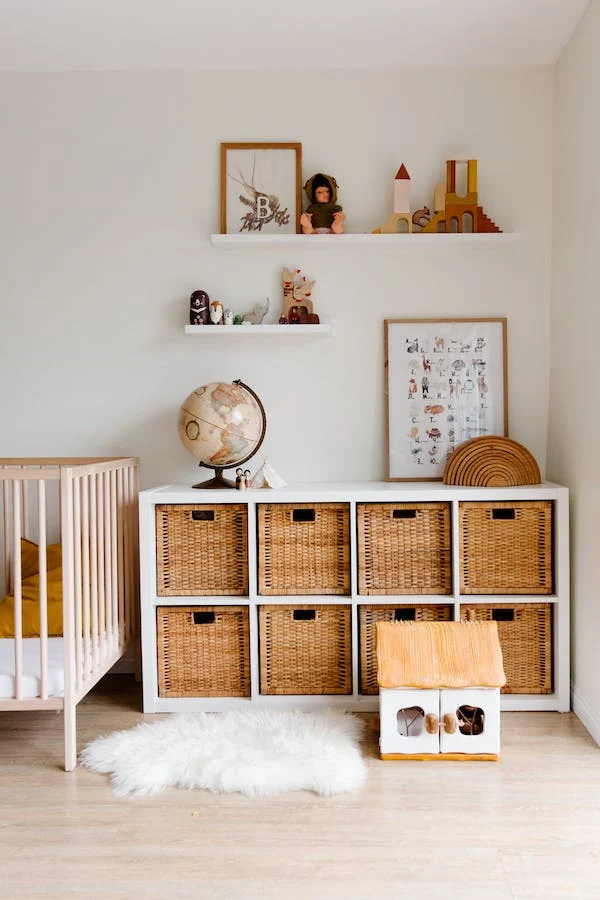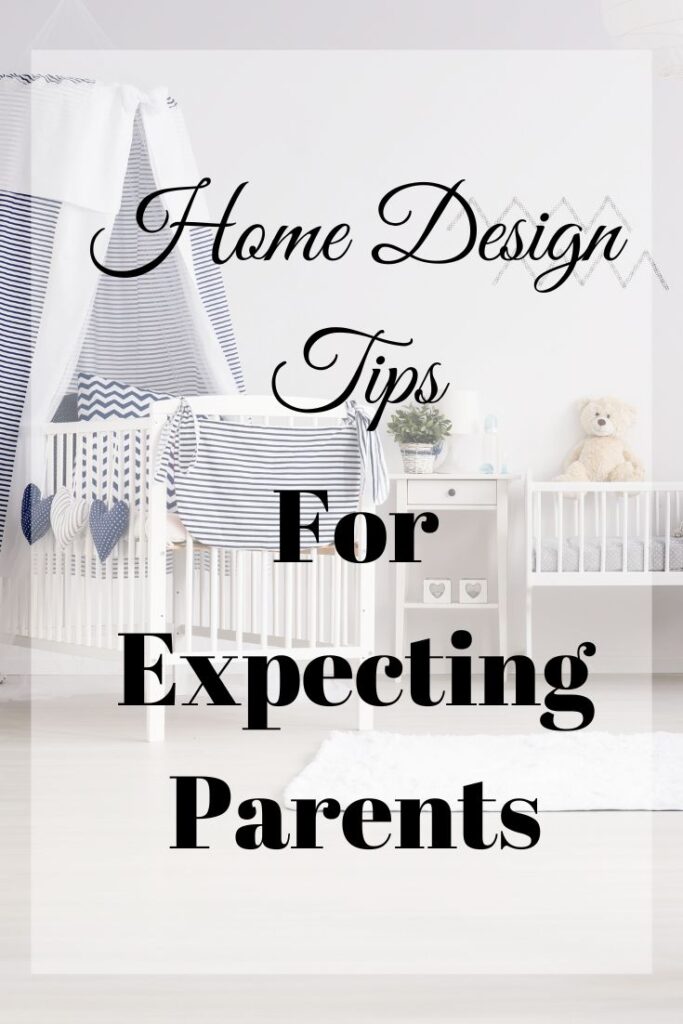This is a Contributed Post
HOME DESIGN TIPS FOR EXPECTING PARENTS
Preparing your home for your new little ones’ arrival is a process all parents must go through at some stage early on in their journey, and knowing where to start or what to do can be stressful and overwhelming if you have nobody to ask for advice.
However, getting this step right will make the transition for you and your baby a little easier, so here are some tips to consider.
The Living Area
When you’re redesigning your home as an expecting parent, it is important to focus on creating a comfortable and welcoming living area. This space will be where you spend a lot of time during your pregnancy and postpartum, whether it’s lounging, watching TV, or reading. To create a comfortable and inviting living area for your growing family, consider the following tips:
1. Invest In Furniture That Is Both Functional And Stylish
This can include large sofas or sectionals that allow you to stretch out and relax, cozy armchairs that are perfect for snuggling up with your partner or a good book, and ottomans or footstools that provide enough space for storing blankets, pillows, and other essentials.
2. Pay Attention To The Lighting In Your Living Area
During pregnancy and after childbirth, you will likely find yourself spending a lot of time in your living area. That means that it is essential to have proper lighting so that you can see clearly and read comfortably. Consider adding floor or table lamps beside the sofa or armchair and dimmer switches on overhead lights to allow for easy adjustments depending on your mood or activity.
3. Add Soft Textiles And Fabrics To The Space
Soft textiles and fabrics will ensure that every space in your home is suitable for your little one. Consider adding drapes, rugs, pillows, blankets, and throws can all help to make your living area more comfortable during pregnancy and after childbirth. Also, look for soft, breathable materials that are easy to clean so they can withstand spills or stains without a problem.
4. Add Pops Of Color Or Pattern To Your Living Area In Subtle Ways
Neutral, muted colors and patterns are a good choice for your living area, as they are simple to pair with any existing furniture or decor. However, don’t be afraid to add a splash of color. For example, you might try adding a colorful throw blanket, brightly colored artwork on the wall, or a chic plant arrangement with vibrant flowers. These small touches can help lift your spirits and make your living area feel more inviting.
5. Consider Adding A Small Play Area For Kids
For parents with young children, it can be helpful to set up a small area in the living room where your little one can play when they are feeling fussy or bored. This might involve adding a play mat and books or perhaps investing in a few age-appropriate baby/toddler toys that can be easily moved or stored.
The Kitchen
When designing your kitchen as an expecting or new parent, it is important to focus on creating a functional and convenient space. A space where your family can enjoy meals and spend time together, as well as a space that allows you to get things done quickly and with minimal stress. Some tips to keep in mind when designing your kitchen include:
1. Pay Attention To The Layout Of Your Kitchen
When designing your kitchen, it is important to consider the layout and flow of the space. Think about how you can best make use of the different areas in your kitchen, whether it’s the sink and dishwasher, food prep area, or storage. This will help you to create a kitchen that is both efficient and convenient.

2. Invest In High-Quality Appliances
When it comes to your kitchen, you want to be sure that you have the right appliances to make cooking and meal prep a breeze. Depending on your budget and preferences, this might involve investing in top-of-the-line models or high-quality brands. Some common kitchen appliances to consider include refrigerators, ovens, stoves, microwaves, blenders, food processors, juicers, and coffee makers.
3. Consider Adding A Few Small Touches
A few small touches can really help to elevate the look and feel of your kitchen. This might involve adding an interesting backsplash or painting the walls a bright, vibrant color. You could also consider investing in some artwork for the walls or even a small plant for a pop of greenery. Whatever it is, make sure that it is something that you love and will enjoy looking at every day.
4. Take Time To Declutter And Organize
This can involve getting rid of old and outdated items that are no longer in use, organizing your pantry according to the types of ingredients you most often cook with, and implementing a regular cleaning routine to keep everything tidy and presentable at all times. By focusing on these small but important details, you can create a kitchen space that is both functional and beautiful.
The Nursery
When designing your nursery as an expecting or new parent, it is important to create a calming and soothing environment that will help you relax and rest during this exciting but often overwhelming time. Some tips to keep in mind when decorating your nursery include:
1. Choose Your Baby’s Room Carefully
The nursery should be a peaceful and calming environment. Consider factors such as the location of the room in relation to noise, temperature control, sunlight exposure, and air quality. If the room is too hot or cold, or if there is a lot of outside noise seeping in, this can make it difficult for your baby to sleep and rest.
2. Make Safety A Priority
Babies love exploring their environment but can quickly get into trouble if not properly supervised. For example, ensure that all electrical outlets are covered with plastic covers; use safety latches on cabinets; install window guards or safety gates at stairs; and keep sharp objects out of reach. You should also know what to do when baby climbing out of crib problems occur. If your little one keeps escaping their crib, it could be dangerous and lead to falls, so you need to know what you can do to prevent this from happening.
3. Optimize Storage Space
As your child grows, so will their collection of toys, books, and clothes, so make sure you have enough storage space from the start! Utilize vertical space by adding shelves above changing tables or cribs; store items in bins or baskets that can easily slide under beds or dressers; or add drawers or cabinets for additional room organization options. Under-bed storage options, such as plastic tubs or customizable under-bed storage that fits into small spaces and can be easily removed, will also prove invaluable as your baby grows.

4. Choose Furniture That Grows With Your Child
Invest in pieces that can transition throughout each stage of your child’s life. From infant to toddler to teenager, there are many different furniture options to choose from, such as cribs that can be converted into toddler beds or changing tables that double as dressers as your child outgrows the need for a changing table. Doing this will ensure you have everything you need without having to purchase a new bed or dresser every few years, saving you a lot of money.
5. Incorporate Comfort Items
When it comes time to pick out furniture for your little one’s bedroom, prioritize comfort items such as rugs and seating cushions that will provide cushioning when playing on the floor or lounging on the bed. Additionally, you can create a fun and inviting environment by incorporating whimsical wall art, colorful bedding and rugs, hanging mobiles or stuffed toys, and creative lighting that will keep your little one engaged and happy. Finally, create a cozy corner for story time with a comfy chair or bean bag, a reading light, and a bookshelf for your baby’s favorite picture books. This little area will serve as a gathering place for your family and will help foster a love of reading and learning.
Final Thoughts
As an expecting or new parent, there are several important factors to consider when designing your home and nursery. By focusing on safety and comfort, you can create a functional and beautiful space for all the stages of your child’s life. With a little planning and forethought, you can ensure that your home is truly a place your baby will love.
YOU MAY ALSO LIKE:
How to Get Your Garden Ready for Summer
How to Declutter Your Home Fast


